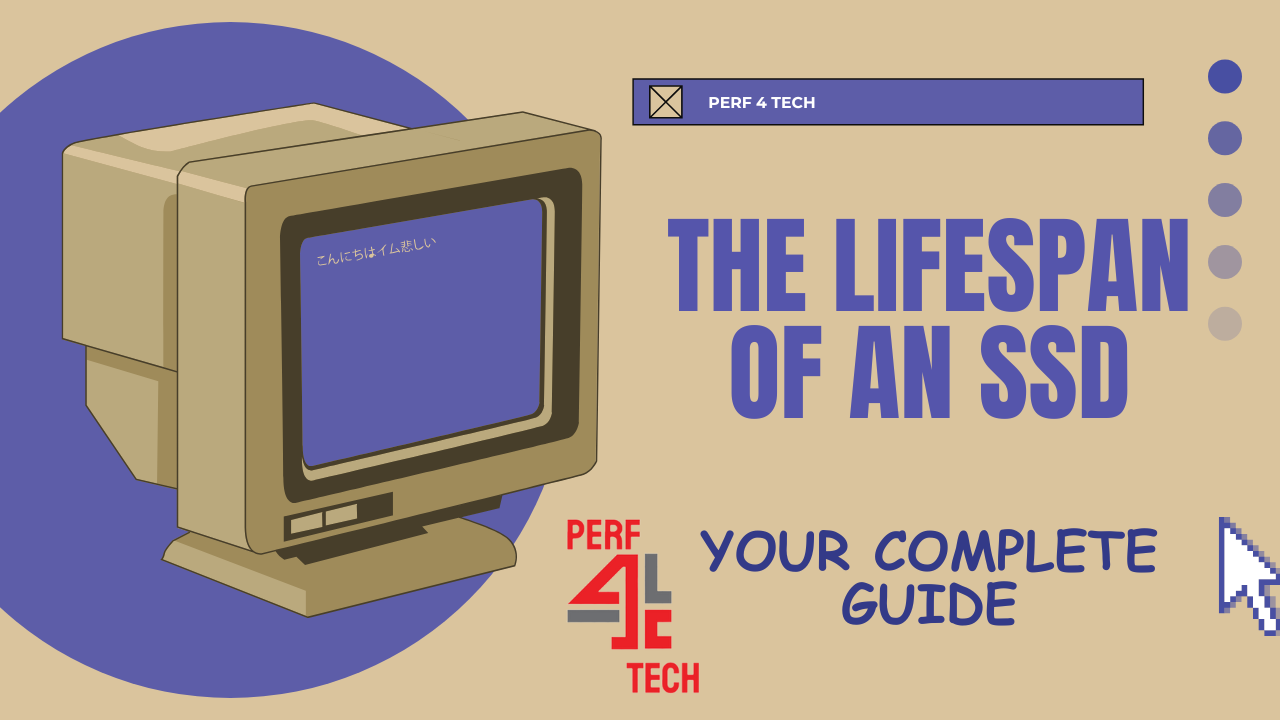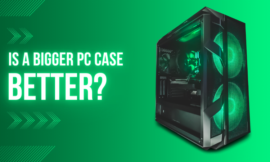With the advancement of technology and the growing reliance on modern storage units, understanding the lifespan of SSDs and their impact on device performance has become essential. Whether you’re a casual user or a tech professional, choosing a reliable, long-lasting storage device is key to ensuring system stability.
In this comprehensive guide, we’ll take you through the factors that affect SSD lifespan, how it is measured, and the warning signs that indicate it may be nearing the end of its life. We’ll also offer practical tips to extend the life of your SSD and maximize its performance.
Table of Contents
Toggle1. What is the lifespan of an SSD?
The lifespan of an SSD refers to the time period or number of operations it can endure before its performance begins to degrade or it stops functioning altogether. This varies depending on manufacturing quality and usage patterns.
Most companies use a metric called TBW (Total Bytes Written) to estimate lifespan. The higher the TBW value, the longer the SSD is expected to function reliably.
Although SSDs contain no moving mechanical parts, their memory cells have a limited number of write cycles. That’s why smart usage can significantly prolong their life.
1.1 Quick Overview of SSD Technology
Solid State Drives (SSDs) are among the latest storage technologies, replacing traditional hard disk drives (HDDs) in many modern devices. They are known for fast data transfer speeds, no moving parts, better shock resistance, and lower power consumption.
For a deeper look into SSDs and how they work, check out our full article: “What is an SSD?”
2. What Makes SSDs Better than Traditional HDDs?
When comparing SSDs with traditional HDDs, several differences make SSDs a preferred choice for many users:
Much faster read/write speeds—faster system boot and app launch times
No moving parts—less risk of mechanical failure
Quieter operation—no noise
Lower power consumption—ideal for laptops
Better shock and vibration resistance—more reliable for travel
Smaller size and lighter weight than HDDs
💡 Note: Despite their advantages, SSDs are more expensive than HDDs, so it’s wise to evaluate your needs before buying.
3. How is SSD Lifespan Measured?
SSD lifespan is typically measured using metrics like:
TBW (Total Bytes Written): Total data (in terabytes) that can be written over the SSD’s life.
MTBF (Mean Time Between Failures): Estimated hours an SSD can operate without failure, based on lab tests.
Some manufacturers also provide a time-based estimate like “5 years of use,” which depends on average usage. Heavy use reduces this lifespan faster.
3.1 TBW (Total Bytes Written)
TBW is a crucial metric used by SSD manufacturers to determine lifespan. For example, an SSD rated at 600 TBW can handle 600 terabytes of data written over its lifetime.
👉 Learn more: “What is TBW in SSDs and Why Is It Important?“
3.2 DWPD (Drive Writes Per Day)
DWPD indicates how many times the entire SSD capacity can be written per day during the warranty period. For example, if a 500 GB SSD has a DWPD of 1, it means you can write 500 GB daily without reducing its lifespan during the warranty.
This metric is especially relevant in write-intensive environments like servers or surveillance systems.
3.3 What is Wear Leveling?
Wear Leveling is a technique used in SSDs to evenly distribute write operations across all memory cells, preventing overuse of specific cells and prolonging lifespan.
Without wear leveling, some cells would wear out faster than others, leading to premature failure of parts of the SSD.
4. Factors Affecting SSD Lifespan
Several factors influence how long an SSD lasts:
Manufacturing quality and NAND cell endurance
Volume and intensity of daily data writing
Data management technologies like Wear Leveling and TRIM
Operating temperature and cooling efficiency
Type of usage: personal, professional, or enterprise
💡 Tip: Avoid excessive writes, update your OS and drivers regularly, and ensure proper cooling to prolong SSD life.
4.1 Types of NAND Flash Memory
| Memory Type | Abbreviation | Bits per Cell | Speed/Performance | Lifespan | Cost | Common Usage |
|---|---|---|---|---|---|---|
| Single-Level Cell | SLC | 1 | Very high | Very long | High | Servers and professional apps |
| Multi-Level Cell | MLC | 2 | Good | Good | Medium | Personal computers |
| Triple-Level Cell | TLC | 3 | Moderate | Acceptable | Low | General desktops |
| Quad-Level Cell | QLC | 4 | Low | Shorter | Very low | Mass storage, budget use |
5. TBW vs. DWPD: Key SSD Lifespan Metrics
TBW shows total data volume that can be written to an SSD before degradation.
DWPD shows how often you can write the SSD’s full capacity each day during warranty.
Both metrics help you choose the right SSD based on your usage needs.
6. How to Know How Much Life Your SSD Has Left
Tools like CrystalDiskInfo or manufacturer-specific software can help assess SSD health by reading TBW, wear indicators, and other metrics.
You can also monitor for indirect signs like slow response times or frequent file errors.
6.1 Average SSD Lifespan Based on Usage
| Usage Type | Average Lifespan | Description |
|---|---|---|
| Light home use | 5–7 years | Browsing, Office apps, casual gaming |
| Office/professional | 4–6 years | Moderate-heavy usage like editing, design |
| Intensive/server use | 2–4 years | Heavy DB or server workload |
| Storage-only | 7–10 years | Rarely used, mainly for data storage |
7. Tips to Extend SSD Lifespan
To preserve SSD health:
Avoid excessive reads/writes
Enable TRIM support
Update firmware regularly
Minimize random writes like constant downloads
Use health-check tools to monitor TBW and performance
💡 Back up your data regularly, regardless of SSD health, to avoid unexpected loss.
7.1 Warning Signs of SSD Failure
Slower read/write speeds
Frequent errors when transferring or saving files
Sudden data loss or inaccessible files
Health check tools show deteriorating status
Frequent boot failures or drive not recognized
💡 Backup immediately and replace the SSD if any of these signs appear.
8. SSD vs. HDD Lifespan Comparison
| Feature | SSD Lifespan | HDD Lifespan |
|---|---|---|
| Typical Usage Life | 3–7 years | 4–10+ years |
| Common Failures | NAND cell wear | Mechanical part failure |
| Shock Resistance | High | Low |
| Heat Sensitivity | Moderate | High |
| Maintenance Needs | Low | Higher (defragmentation, cleaning) |
| Performance Over Time | May degrade gradually | Mechanical wear causes slower speeds |
9. Best SSD Health & Lifespan Tools
CrystalDiskInfo – Free, open-source, reads S.M.A.R.T. and SSD health.
Samsung Magician – Official tool for Samsung SSDs.
Hard Disk Sentinel – Detailed logs, supports both SSD and HDD.
HWiNFO / HWMonitor – Hardware monitoring, temperature, and health data.
SSD Life – Specialized SSD monitoring and lifespan estimation.
Kingston SSD Manager – Health reports and firmware updates for Kingston SSDs.
For more, read our full guide: “Top Tools to Check SSD Health”
Frequently Asked Questions About SSD Lifespan
1. What is the typical SSD lifespan?
Usually 5–7 years with normal use, longer with light use or high-end models.
2. Should I replace a 10-year-old SSD?
Yes. Even if it works, memory cells lose efficiency over time and can fail without warning.
3. How many years does an SSD last?
Typically 3–10 years, depending on quality, size, and usage.
4. When should I replace my SSD?
Replace it if performance drops, you see read/write errors, or health check tools show poor condition.
5. How do I know if I need a new SSD?
If your system slows down, files go missing, or tools like CrystalDiskInfo warn you, consider a replacement.
6. Does an SSD speed up a computer?
Absolutely. SSDs drastically improve boot times and app loading compared to HDDs.
Final Thoughts: Can You Rely on an SSD for the Long Term?
Now that you understand how SSD lifespan works and what influences it, you can make smarter decisions when buying or managing one. Don’t wait—check your SSD’s health today and ensure you’re getting the best performance while it still lasts.
👉 Have you checked your SSD’s health recently? Noticed any signs of wear? Share your experience—are you planning to replace it soon, or is it still going strong? 🙂




